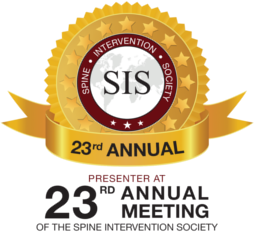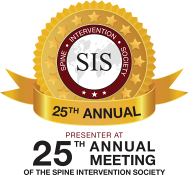Posture is how your spinal cord curves and muscles engage when sitting or standing. The spine and the muscles must work together for proper posture. Your spine anchors and strengthens the body. Therefore, when you have poor postures, the spine and the muscles do not engage properly, leading to back pain and health problems. Many people, especially those who spend long hours behind a desk in the office, experience back pain. If you are one of these individuals, you want to understand the relationship between poor posture and back pain and pointers to help alleviate or eliminate the pain.
Correct or Proper Posture Meaning
Posture refers to the body’s relative position at any given time. It outlines spine alignment with the A correct posture is any position that puts minimal pressure and maintains balance on the spine, muscles, ligaments, and tissues, allowing for efficient energy motion in the spine. A poor posture or lack of one adversely impacts spinal motion, causing:
- Joint strain
- Neck pain
- Back pain
- Headaches
An inappropriate posture also increases the risk of injuries during exercises.
An improper posture can also affect your confidence and appearance, so you must understand the most effective way to maintain energy movement and flexibility in the spine when walking, sitting, standing, or moving.
Your body structure is unique, meaning that the relative body position that suits one person differs from that of another. This leads to the conclusion that there is no right or wrong posture. Nevertheless, there are guidelines you can adhere to to upgrade your alignment and alleviate back injury. If your spine curves properly and engages other muscles effectively, you will say goodbye to spinal cord issues and other health problems.
Your spine comprises three curves:
- The first in the neck
- The second in the middle, and
- The last in the lower back
These curvatures shape your back, and how you curve it at these points determines the back alignment. You begin to experience back problems when you add an extra curve to the existing ones. An extra curve means the spine and the muscles will not work together, leading to ineffective energy motion, which is the source of your pain.
Poor Posture Types
You can quickly develop poor posture without knowing. The lousy posture develops due to daily activities like sitting, standing, moving, bending, lying, or lifting. Repetitive motions on the job also increase the risk of poor posture.
Wearing the wrong shoes, being pregnant, being overweight, or wearing high heels contribute to poor posture. Besides, individuals born with curved backs, scoliosis, or one shorter limb also experience bad postures that adversely affect their spinal motion.
The ordinary poor posture types are:
-
Swayback or Hyperlordosis
Swayback refers to the excessive arching of the lower back when you tilt the pelvis and hips in front of the midline of your body. The lower back experiences a binge inward curve when you are in this position. You lean back when standing, with the stomach and backside sticking out.
Swayback or lordosis is common among persons who sit for long hours, tightening the spinal cord muscles. Again, prolonged sitting weakens your core and glutes, the muscles responsible for lumbar stability. When these stabilizing muscles weaken, you develop a swayback.
Other factors contributing to lordosis include spinal cord and vertebrae abnormalities, neuromuscular illnesses, obesity, and injuries.
-
A Flatback
When your lower spine or lumbar area loses its curvature, you develop a poor posture called a flatback. Typically, the posture causes the lumbar region to look straight, and you appear to lean forward or hunch over.
You could be born with the condition or develop it after spine surgery or a degenerative spine condition, vertebrae decompression, disc degeneration, or inflammatory arthritis.
When you suffer from a flatback, you experience severe back pain while standing for prolonged durations.
-
Kyphosis or Hunchback
Kyphosis is an exaggerated bend or arc of the middle area of the spine, called the thoracic or dorsal spine, that causes your shoulders to round up.
The leading cause of a hunchback is bone thinning or osteoporosis, which primarily stems from aging. This makes hunchbacks common in senior citizens, particularly women. Age-related factors like vertebrae or disk degeneration are other causes of kyphosis.
Even though the condition is mainly common among senior citizens, young people with infections, Scheuermann’s illness, or polio are susceptible to kyphosis. Further, young individuals who undergo chemotherapy or radiotherapy for cancer treatment are also at a heightened risk of developing a hunchback.
-
Forward Head
Another common poor posture type is the forward head. Forward head or text neck is typical among individuals who look down on their electronic devices or tools for extended durations. The ears and shoulders line with the vertical midline in a well-aligned body. However, you have a text neck or forward head when the ears and shoulders move ahead or in front of the vertical midline. Other names for this poor posture are nerd neck or tech neck.
-
Poking Chin
You develop a poking chin when you sit low and lean forward to see a screen in front of you or look up to view a screen at high elevation. The posture causes your chin to lunge forward.
-
Uneven Shoulders
When one of your legs is longer than the other, one shoulder or hip tends to tilt, leading to uneven hips or shoulders.
Everyday Activities that Contribute to Poor Posture
Routine activities include sitting, standing, walking, lifting, lying, and bending. The bad habits you could develop when performing these activities leading to poor posture are:
- Sitting on the bed to use a laptop for long hours
- Hunching or bending forward for extended durations to clean utensils or weed
- Lying down with the belly down to read or use a laptop
- Long arm motions
- Walking while crouching forward without trunk or head support
- Bending the back to lift heavy weights from the floor
- Concentrating your body’s weight on one side while standing
When you repeat these bad habits, you are likely to develop poor posture, leading to spine motion problems and other health complications. Therefore, if you notice that you develop back pain or other health problems when you change your office desk, vehicle, or job responsibilities, and the discomfort goes away when you switch positions or worsens at particular hours of the day, it means some of your everyday activities could be causing inappropriate posture. Find out which activities could be causing your back problems and adjust your posture to avoid health and spine issues.
The Best of Most Appropriate Posture
When you hear that changing your posture to a more effective one that promotes efficient energy flow reduces or eliminates most of your back problems, you will wonder what an appropriate posture means. An efficient posture is one where the backbone aligns with your head and legs.
Viewing from the sides, your body should assume the shape of a plumb line running from the head through the center of your ears and shoulders. The line should then run through the center of your knee and the anterior middle of your talocrural joint.
A good spinal alignment involves striking a balance between the muscles and the spinal cord to shield the body from injuries or stress that could lead to joint or muscle regeneration. Proper alignment promotes efficient energy flow in the body, helping you to stand upright.
Adverse Health Effects of Improper Posture
Poor posture leads to many health problems, including back pain, imbalance, foot pronation, and temporomandibular joint pain. The health effects you will experience depend on your type of improper posture.
Forward Head Effects
The health effects you will experience from having a forward head misalignment include:
- Headache
- Stiff neck
- High death rate among older men and women
- Neck pain
A nerd or tech neck causes the muscles anchoring the ligaments and sinew in the anterior of your neck to tighten. Again, the posture lengthens the posterior neck muscles.
A 2019 study on healthy collegians established that nerdy neck posture decreases mid-spine motion, resulting in lower respiratory or lung function. The more you bend or incline forward, the more stress and head weight you exert on the spinal cord, resulting in dramatic effects. In proper posture, your head weighs at least ten pounds and no more than twelve pounds. If your forward head is misaligned by fifteen degrees, the force the head exerts on the spinal cord is twenty-seven pounds. A 45-degree forward posture exerts forty-nine pounds on the spine, while sixty degrees put a strain of sixty pounds on the spine. The statistics are based on a 2014 force estimation study to determine the amount of pounds produced when you lean the neck forward.
Kyphosis or Hunchback
A hunchback is a more extreme forward posture. The degree of the hunching determines the extent of the pain you will experience. If the misalignment is severe, walking is more challenging and more susceptible to falls, leading to injuries. Research shows that female senior citizens are 70% more likely to suffer fractures due to kyphosis. Poor posture adversely impacts your motion and increases the risk of death among senior citizens.
Swayback or Hyperlordosis
Hyperlordosis increases back pain, impairing your mobility. Also, improper posture makes you susceptible to hip and spine injuries. The risk of musculoskeletal injuries like disc and joint degeneration is also high. A common indication that you have hyperlordosis is neck and lumbar area pain.
Flatback
When you suffer from a flatback disorder, you will experience pain in the pelvis and thighs when you stand up. Neck and back pain are also common in this kind of posture. The more you stand, the fatigue and discomfort worsen. Besides, you will have trouble walking because of leg or limb pain and muscle weakness.
Connection Between Insufficient Posture and Back Pain
When you have an improper posture, you put stress or strain on the muscles, discs, and spinal joints. The pain subsides once you switch positions or correct the misalignment. Other times, the stress buildup continues, weakening the structure in question.
For instance, extended hunching when seated or standing stresses the back and abdominal muscles, causing pain and lowering the blood supply. As a result, you gradually develop trunk and lumbar area stiffness.
Similarly, when you sit without support, you cause the spinal cord to bend forward. If this continues for long, you apply excessive pressure to discs in the lumbar area, resulting in disc herniation.
Inappropriate lifting also causes herniation of the lumbar disc, radiating pain to the lower back and the legs through the spinal nerve.
Lastly, when you use the laptop or read with your belly facing down, the lumbar section and the hip extend excessively, impairing the efficiency of the lower back curvature.
You require more effort and energy to maintain an improper posture than a correct one. Nevertheless, you need time and consciousness to adjust your posture from incorrect to correct.
Fixing the Incorrect Posture
Your body is the one that controls your posture. However, this should not mean that you cannot do anything to fix or correct a misalignment for improved overall health and efficient spine motion.
The first step towards correct posture is identifying the activities or habits contributing to the misalignment. You should be conscious of your everyday activities and habits.
Additionally, you can cure the situation by adjusting your workstation, sitting fit, changing the chair, or purchasing a new mattress.
Always maintain your head above the shoulders and the shoulders above the hip. Besides, always keep the lower body stable when sitting or standing. The feet should be flat on the floor, and the knees should be bent when seated. If the feet do not touch the floor, use a footrest. While standing, keep your feet apart and distribute the body weight equally on the legs.
If you are struggling with a nerd or text neck, you can correct the misalignment through:
- Adjusting your phone holding position
- Taking phone breaks
- Trying exercises like an exaggerated nod, cat-cow, padahastasana, yoga, and bow pose
Also, consider walking tall by keeping your head straight and balanced over the spine. Also, you must sit with support and be careful when lifting heavy weights. Increasing your physical activities can also reduce the number of hours you spend seated, lowering the risk of developing bad posture.
Improving the strength of your abdominal muscles through exercises can also help you fix misalignment. Some of the core strengthening exercises include planks.
Avoid a sedentary or stationary lifestyle by taking short breaks every thirty minutes. The breaks do not have to be extended. You can just stand and stretch or take a quick walk.
Benefits of a Correct Posture
Maintaining the correct posture helps you avoid problems like neck and shoulder pain. Besides, whether you are working or exercising, proper posture helps prevent and reduce or prevent falls and injuries.
Observing the correct posture reduces muscle and joint strain and wear. Furthermore, it reduces joint and disc stress and eliminates back pain. If you have been experiencing these side effects, consider adjusting the misalignment before you can even consult a neurointerventional surgeon.
Incorrect Posture and Its Effects on Movement
Incorrect posture interrupts natural spine alignment, motions, and flexibility. In misalignment, the spine, vertebrae, and muscles overcompensate, leading to stiffness and low mobility. As time passes, specific muscles are fatigued, and others are weakened, leading to an imbalance. The lack of balance results in uncoordinated movement.
Poor posture also exerts excess pressure on the spinal cord discs, causing pain and restricting movement. As a result, everyday activities like walking, standing, sitting, lifting, and bending that you used to perform effortlessly become difficult and painful.
Incorrect Posture and How It Interrupts the Nervous System
Improper posture misaligns and exerts pressure on the spine, causing distortion. The spinal cord forms a central part of your nervous system, as many nerves run through it to the brain and other body parts. When the spine is compressed or misaligned due to poor posture, the nerves branch out, and others become compressed or pinched, interfering with signal transmission. If there is interference of signal transfer from the brain to various body parts, you will feel tingling, discomfort, and numbness radiating to the legs.
For instance, when you have a slouch posture, it compresses the cervical spine, interrupting the nerves passing through the neck. Therefore, you begin to suffer from headaches and discomfort in the arms. Besides, misalignment pinches the sciatic nerves, leading to neuropathic pain or limb weakness. If these symptoms persist, they interrupt your mobility coordination and functions, indicating the severe effects poor posture can have on your nervous system.
When to See a Spine Specialist
If you are experiencing persistent side effects of poor posture, like back or neck pain, and adjusting the posture has not fixed your problem, it is time to speak to a spine specialist. The expert will conduct a thorough evaluation for diagnosis and recommend physical therapy or chiropractic care tailored to your back problems. If these, coupled with pain injections, do not fix the problem, you could require minimally invasive spine surgery.
Find a Neurointerventional Surgeon Near Me
Correct posture or back alignment is the most appropriate way to ensure efficient energy flow and prevent disc and muscle strain. However, it is easy to develop bad posture, especially if you have a stationary lifestyle or spend long hours behind a desk or using your phone. Poor posture leads to misalignment and other severe problems like back pain and herniated discs. Therefore, you should consult a spine specialist if you have tried to correct the misalignment unsuccessfully.
At LAMIS, we have experienced physical and medical therapists to help you fix your posture. If damage has been done, we have experienced neurointerventional surgeons to conduct minimally invasive spine surgery to resolve your problem. Call us at 310-734-6088 for a free consultation.






